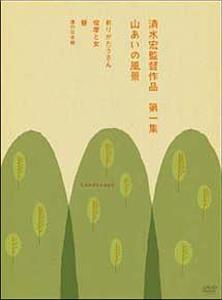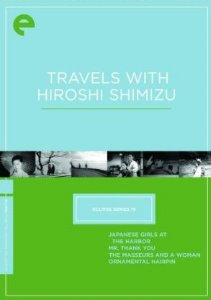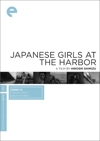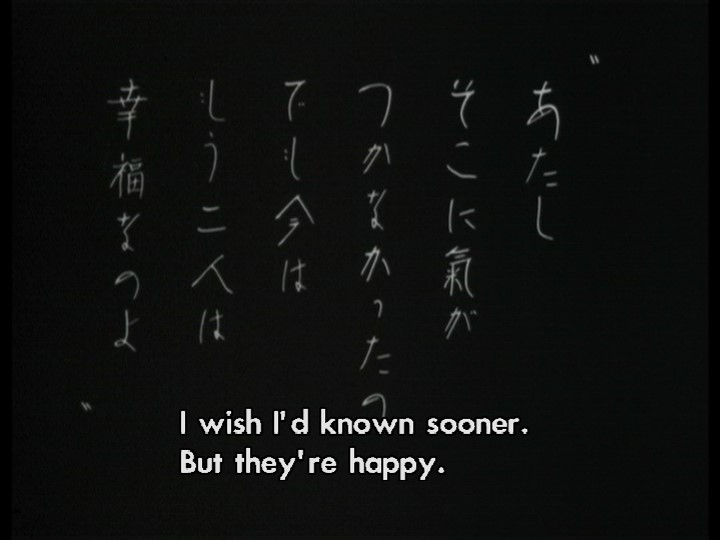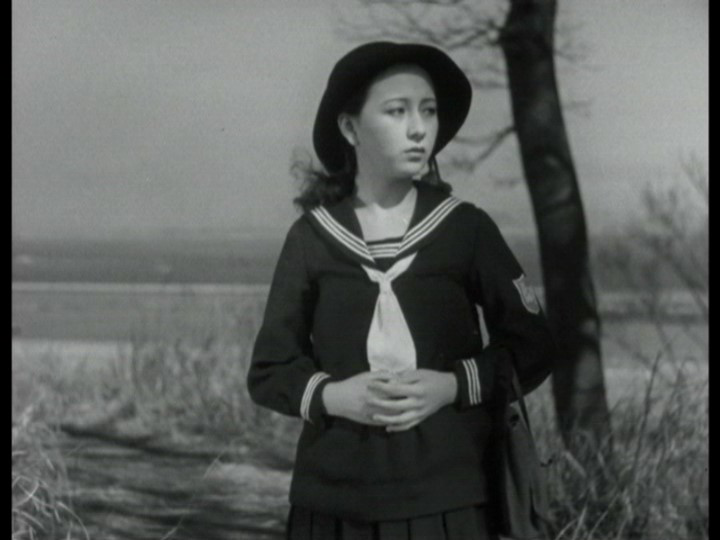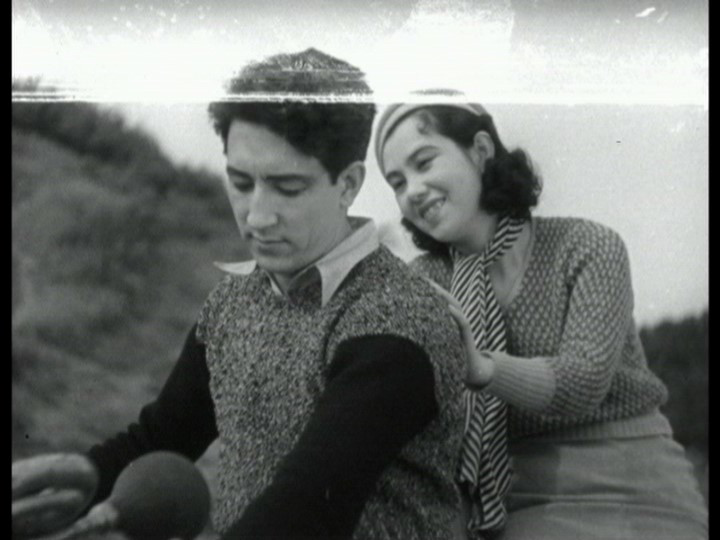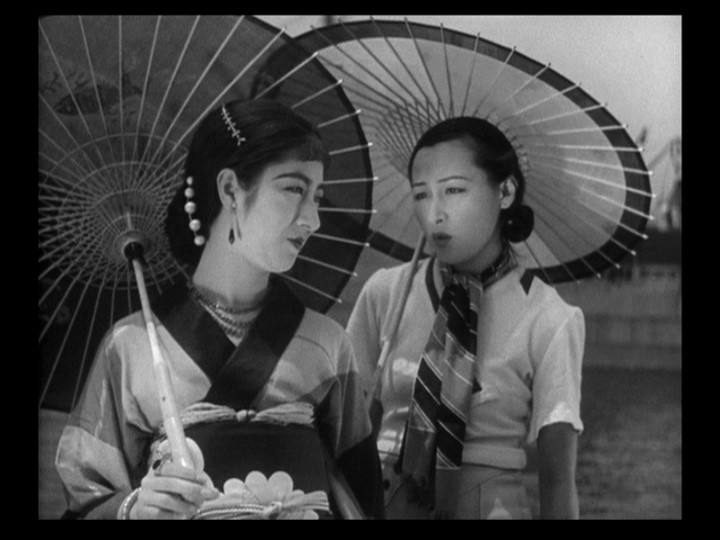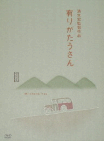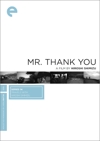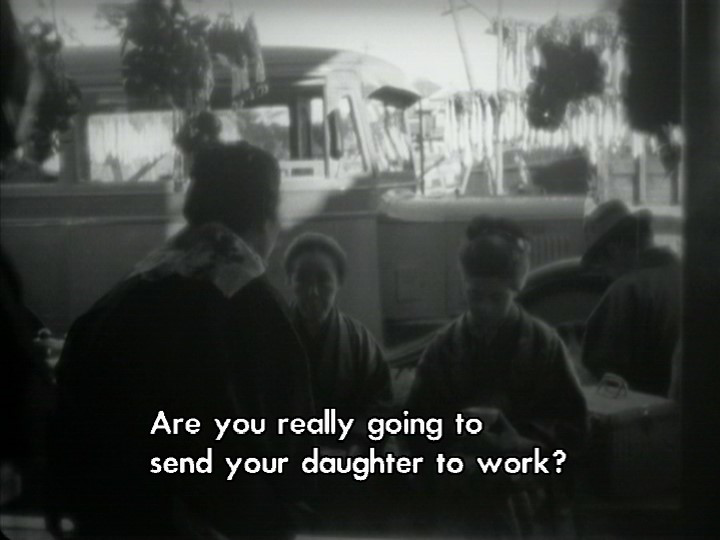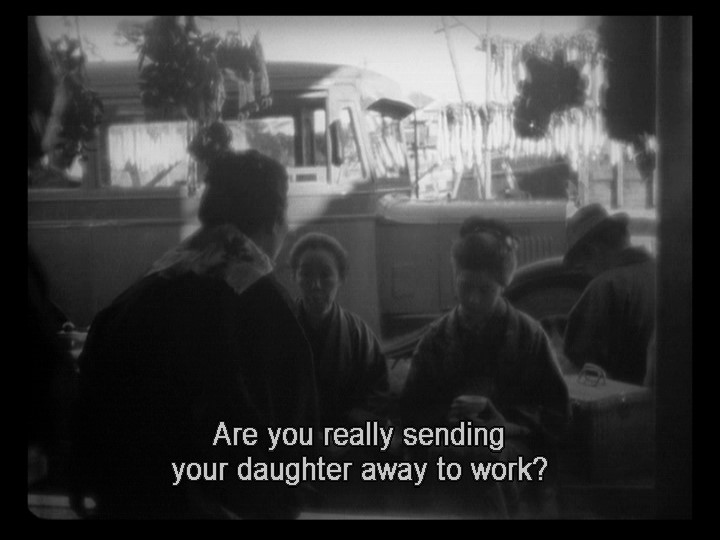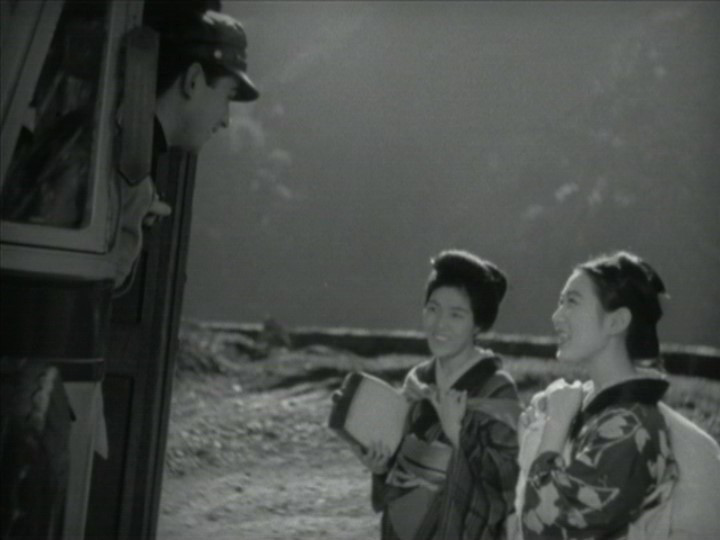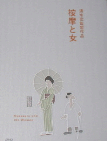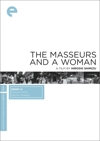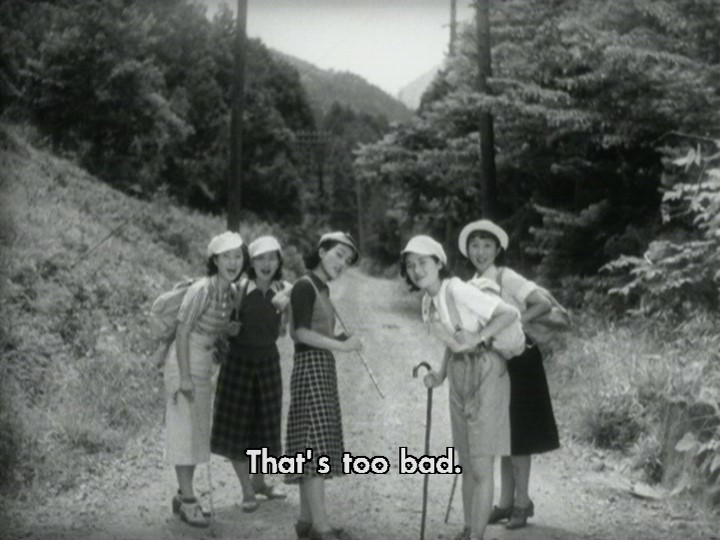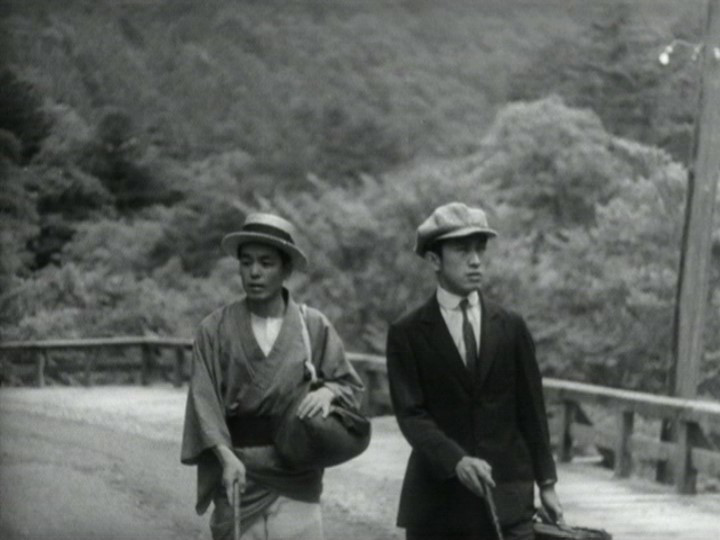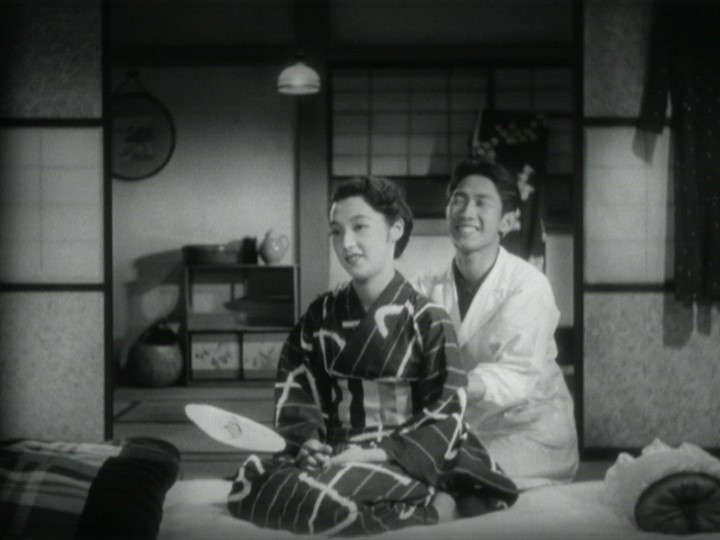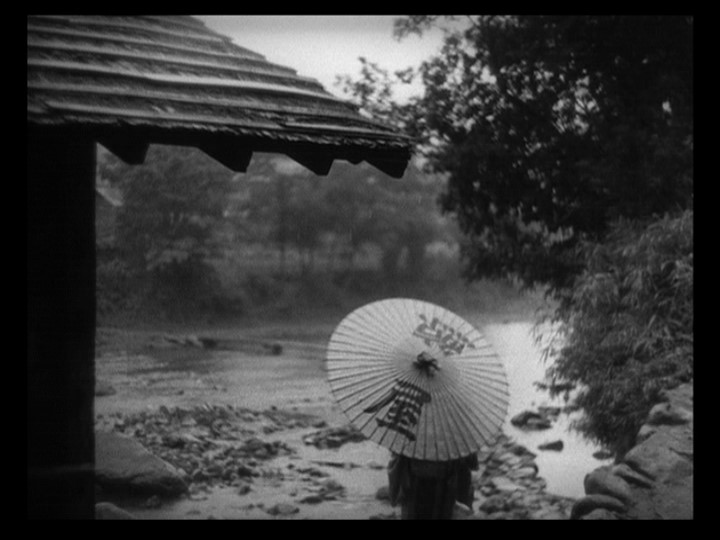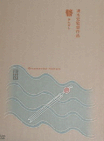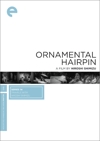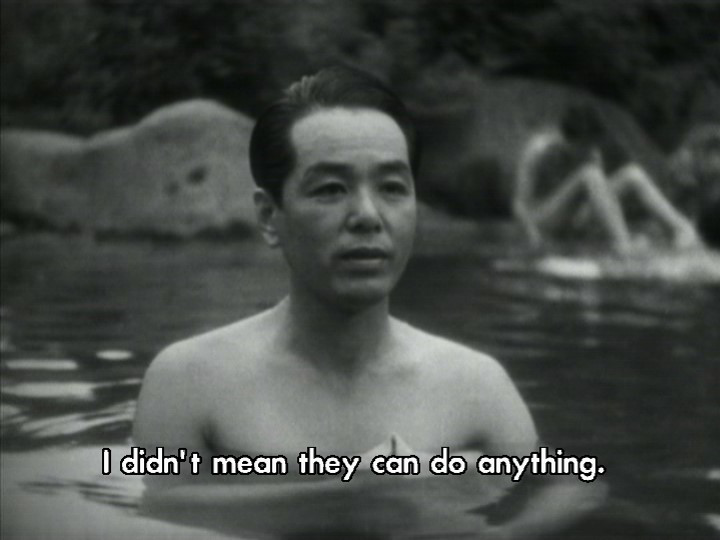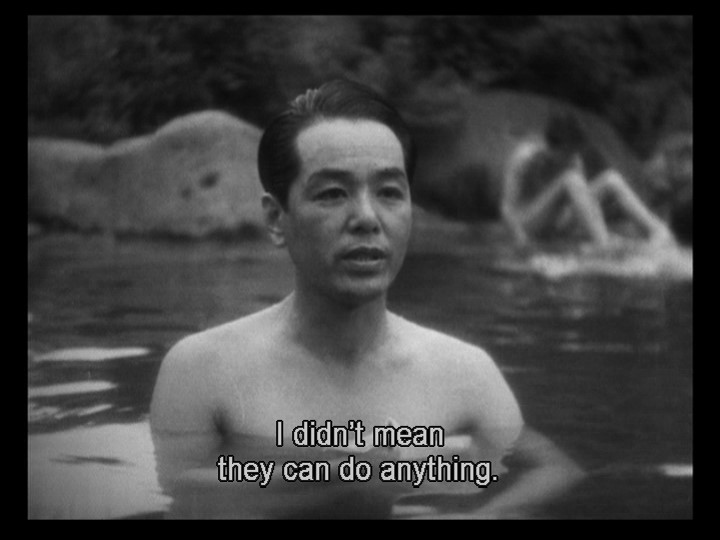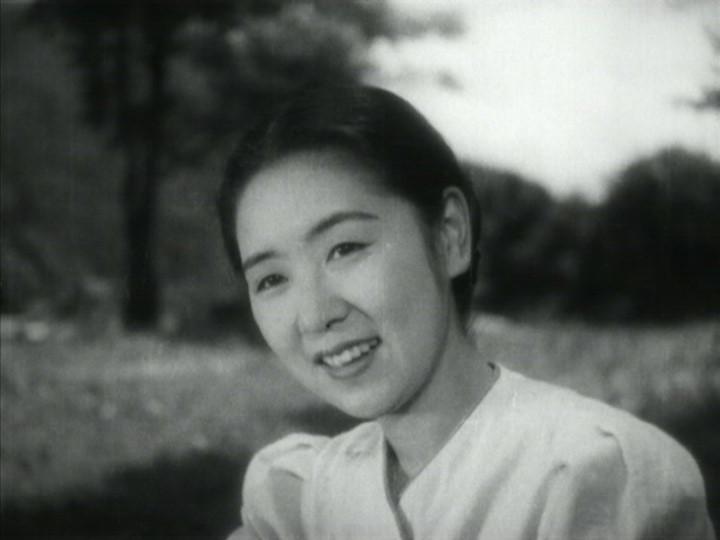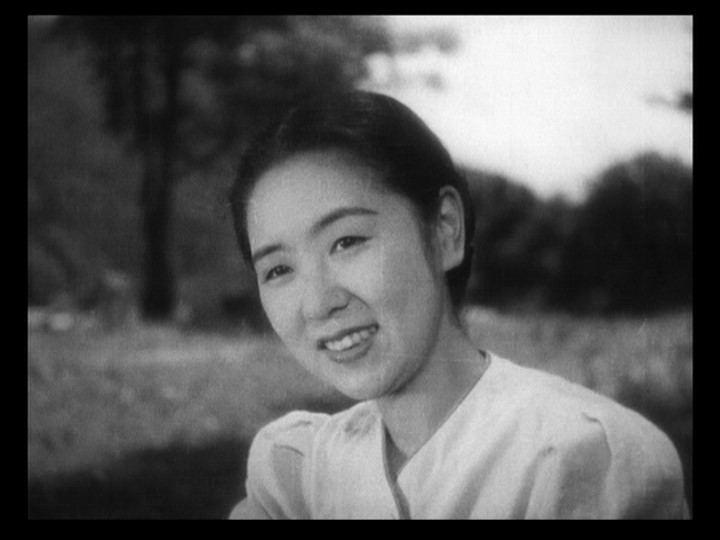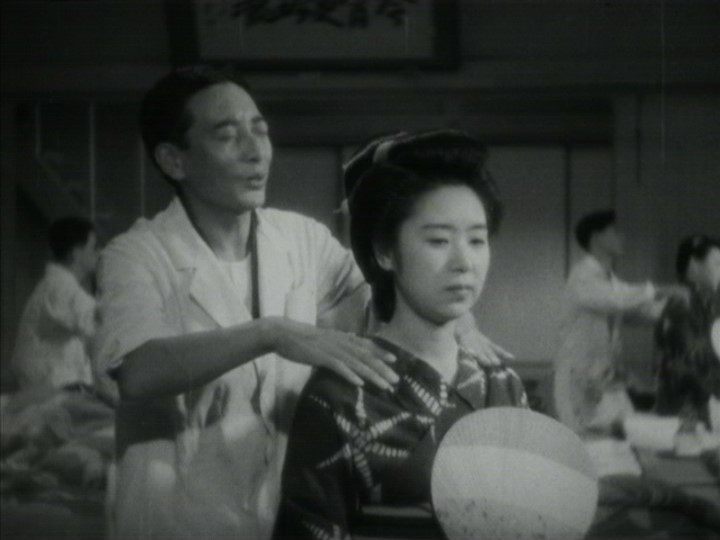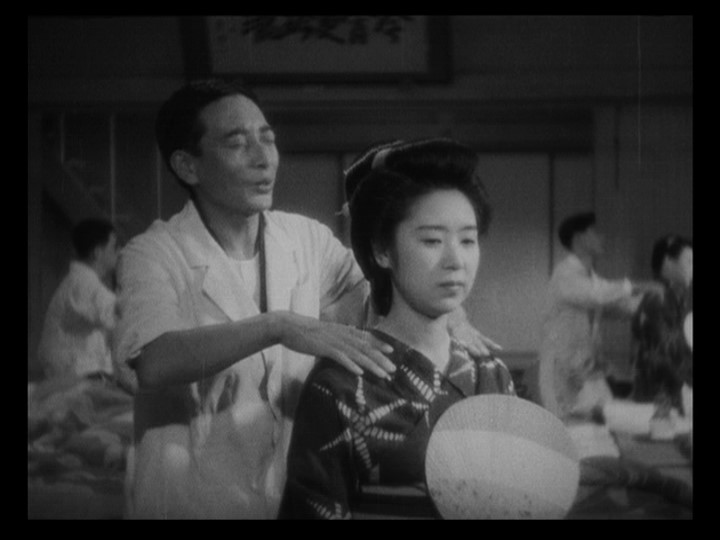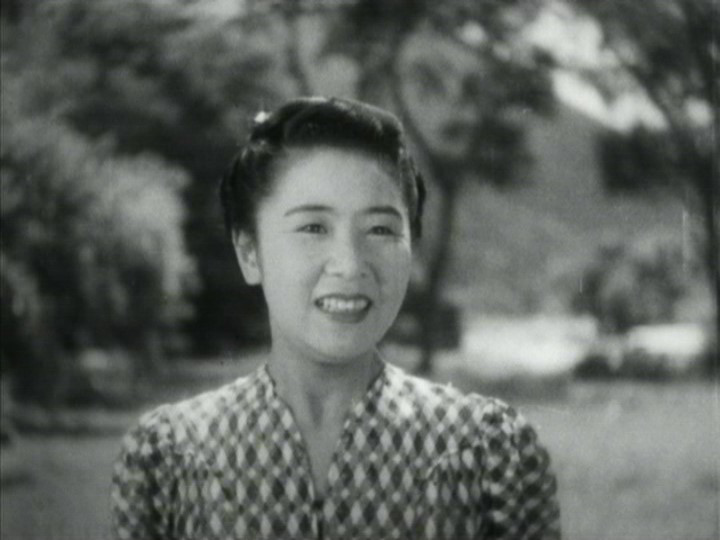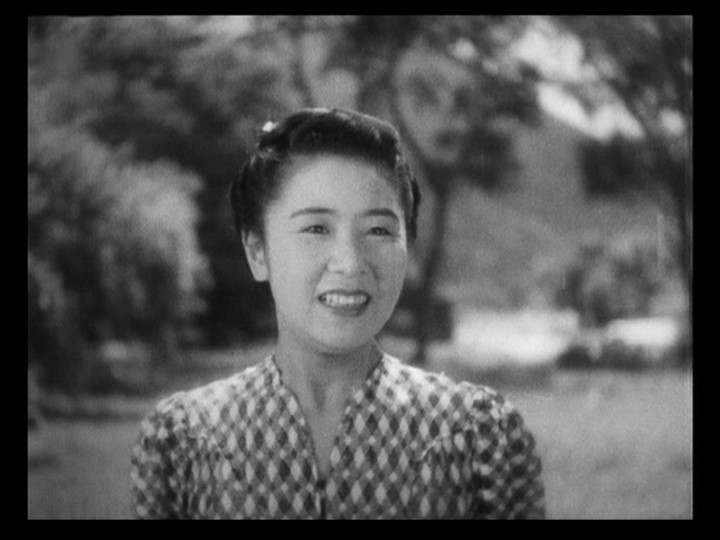![]()
![]()

![]()
![]()
|
Search DVDBeaver |
S E A R C H D V D B e a v e r |
 |
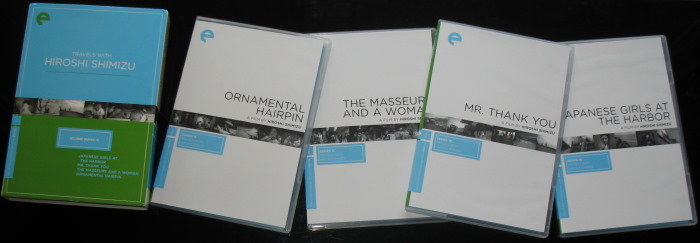 |
Shimizu Hiroshi Collection - Part 1 Yamaai No Fukei
vs.
Eclipse
Series 15: Travels with Hiroshi Shimizu
Minato no Nihon Musume (Japanese Girls at the
Harbor, 1933)
Arigatau-san (Mr. Thank You, 1936)
Anma to Onna (The Masseurs and a Woman, 1938)
Kanzashi (Ornamental Hairpin, 1941)
|
One of the
undisputed masters of Japan cinema, Shimizu Hiroshi (1903-1966) made
well over 100 films in his career, ranging from children's films to
lighthearted comedies to stories from the fringe. His outstanding
cinematic achievements match that of contemporary great and lifelong
friend Ozu Yasujiro, though the latter has eclipsed him in
recognition. Shimizu Hiroshi is particularly well known for his
children's films, such as Children in the Wind (1937), but
his steady stream of output for Shochiku from the 1920s to 1950s
yielded a far wider selection of films, many of which have been
sadly lost to time. In comparison to Ozu's films which are readily
available, Shimizu's works have been near impossible to find outside
of the festival circuit, but Shochiku is now finally releasing
Shimizu's films on DVD with English subtitles.
Entitled Yamaii no Fukei ("Mountain Scenery"), the first four-disc boxset in the Shimizu Hiroshi Collection comes with four films: Arigato-san (1936); Anma to Onna (1938); Kanzashi (1941); and Minato no Nihon Musume (1933), a silent film that is only being released as a bonus feature with this boxset. |
Titles
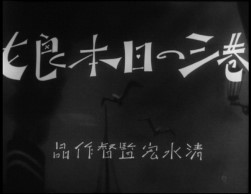 |
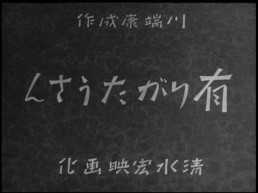 |
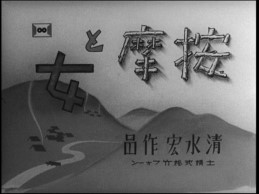 |
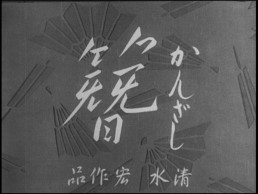 |
|
Theatrical Releases: Various from 1933-41
DVD Comparison:
Shochiku Home Video - Region 2 - NTSC vs. Eclipse - Region 1 - NTSC
| DVD Box Cover |
|
|
| Distribution | Shochiku Home Video - Region 2 - NTSC | Eclipse Series 15 (Criterion) - Region 1 - NTSC |
| Time: | Respectively - 1:11:12 + 1:15:39 + 1:06:02 + 1:10:18 | Respectively - 1:11:45 + 1:15:57 + 1:06:22 + 1:10:36 |
| Bitrate:
Japanese Girls at the Harbor (Shochiku) |
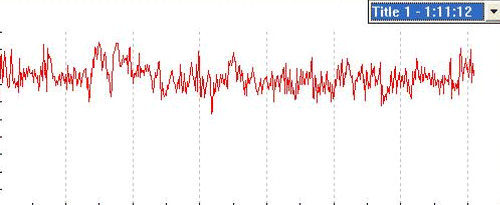 |
|
| Bitrate:
Japanese Girls at the Harbor(Criterion) |
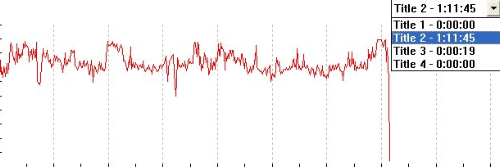 |
|
|
Bitrate:
Mr. Thank You(Shochiku) |
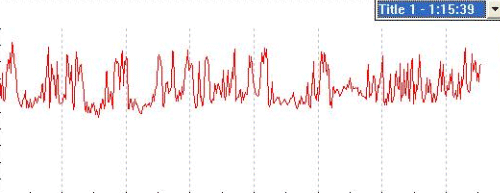 |
|
| Bitrate:
Mr. Thank You(Criterion) |
 |
|
|
Bitrate:
The Masseurs and a Woman(Shochiku) |
 |
|
| Bitrate:
The Masseurs and a Woman(Criterion) |
 |
|
|
Bitrate:
Ornamental Hairpin(Shochiku) |
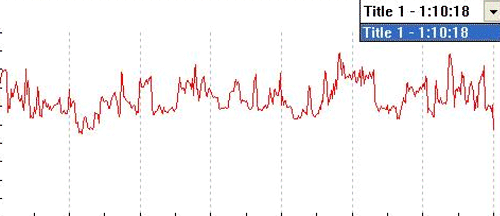 |
|
| Bitrate:
Ornamental Hairpin (Criterion) |
 |
|
| Audio |
Japanese (mono) |
Japanese (mono) |
| Subtitles | English, Japanese, none | English, none |
| Features |
Release Information: Edition Details:
•
Trailer for modern version of Masseurs and the
Women (1:31)
•
Paperwork- booklet (all in Japanese)
|
Release Information: Edition Details: • none
|
| Comments: |
ADDITION: Eclipse Series 15 - March 09': Differences are quite obvious by looking at the screen caps. The Criterion is once again pictureboxed (see our full description of 'pictureboxing' in our Kind Hearts and Coronets review) and has superior contrast to the Shochiku Home Video which now looks somewhat greener. Damage on the Criterion is less noticeable than mentioned below ex. Mr. Thank You - although looking better remains the weakest with The Masseurs and a Woman possibly appearing, visually, the least affected by age. Criterion bitrates are slightly higher with all four in the mid to high 7s each disc is single-layered. Bottom line is that the films still shows there deterioration, with flickering contrast, but the Criterion appear cleaner with more pure black and whites. Audio-wise - Criterion remain Japanese original mono but on the silent Japanese Girls at the Harbor they offer the option of a new score written and performed by noted silent-film composer Donald Sosin and it sounds marvelous. Subtitles - seem in a few instances where the Shochiku were more précised the Criterion give a fuller translation. Eclipse continue to offer no extras except liner notes visible through the transparent keep case - where the Shochiku has the trailer for Masseurs and a Woman and the liner notes (in Japanese text). One benefit about this Eclipse boxset is the price which is around 50% of the Japanese set. If only it had come out first :) - we of course recommend the Eclipse - important films looking and sounding better than ever before on digital for the privacy of your home theater. ***
NOTE: Although the 4 features of this boxset are housed in individual custom cases (see images above and below) they are not sold separately at this time and can only be obtained in Shochiku's Shimizu Hiroshi Collection - Part 1. Technical specifications of the discs: Surprisingly all are single-layered... and region 2 coded in the NTSC standard, progressive and in their original 1.33:1 aspect ratio. Bitrates show transfers in a healthy range from 6.49-7.92 mb/s. The package: Gorgeous. Beautifully bound, heavy, thick cardboard, individual cases opening book-style inside a similarly sturdy box with one photo from the film on one side and small drawing with the title on the other. Exceptionally nice. Image: Quality is about what I anticipated. The Japanese are notorious for the poor storage of vintage films but these four features are all very watchable. The only silent entry, Japanese Girls at the Harbor, interestingly enough looks very strong throughout most of the film but has scattered individual frame damage (see sample below). I also enjoyed it very much and it is advertised as a 'bonus' adjunct to the collection of the three later films. In each of the three others detail is expectantly soft but contrast is very passable, although blacks and whites have a green infiltration. I don't suspect any vast restoration has been done but seeing as the majority of information in the text inserts is in Japanese I can't state that with any certainty. Noise is very minimal. Unfortunately Mr. Thank You, possibly the most anticipated of the collection, is also the weakest image-wise. It shows some frailty although the story intent shines through regardless. The Masseurs and a Woman might be the cleanest but has some excessively bright scenes in the beginning so, for all, the image quality here is far from pristine. The big plusses are that they are progressive and haven't had blanket boosting to hide the damage marks as we see from many inferior Japanese DVD production companies.
Audio - Firstly, Japanese Girls at the Harbor, is truly silent throughout without augmentation of any musical accompaniment. For the other three the audio is as similarly as weak as the image representations. 'Hiss' exists as well as a few dropouts and softened pops. I doubt anyone would expect crystal clear audio, but I can only confirm that this still leaves something to be desired. The optional English subtitles appear a bit précised but are clear enough, and given adequate time onscreen, to view without strain. Extras - There are none digitally aside from a 1.5 minute trailer for modern version of Masseurs and the Women (on that disc), which appears to identically duplicate many scenes from Shimizu's classic. Although I have not seen the entire film, I would like to now. A 14-page booklet with photos (and some ,loose-leaf paper flyers with each disc) is included but is entirely in Japanese. *** Overall impression: Shimizu has unique proclivities, dissimilar to the stylings of Ozu but they can definitely be judged 'his own'. Many scenes around Japanese social activities crop up in multiple films (baths, massages, bus transportation etc.). The package reminded me of an Eclipse boxset - director-focused, pragmatic presentations of 'lost, forgotten, or overshadowed classics'! In this case though the DVD boxset is not cheap but I believe it may be the only way you can see these films outside of a rare film retrospective. Like Ozu, I can see more exposure to his oeuvre make the films grow on you to a strong extent. I'm glad I was able to partake of this collection - it was like stepping back in time but I was struck by how 'modern' the male/female interactions were presented - of course though I suppose that could be considered a universal human condition. For fans of Japanese film and previously unaware of Shimizu Hiroshi's gentle cinema this is a wonderful opportunity to indulge in his work and I look forward to the second volume coming out in late June, and like this collection, is also available from YesAsia, CDJapan and Amazon Japan. |
DVD Menus
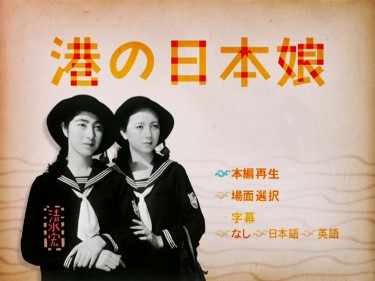 |
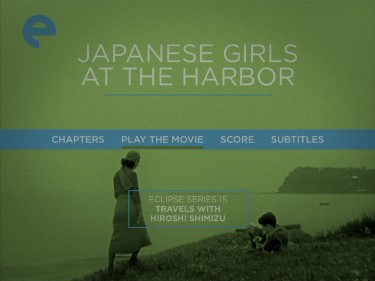 |
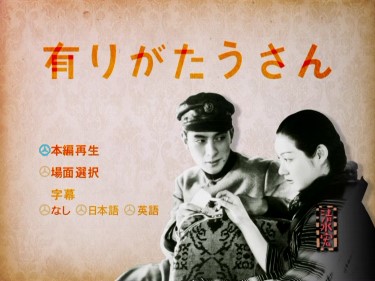 |
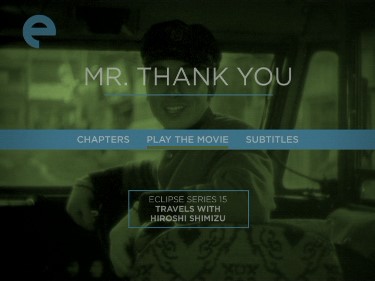 |
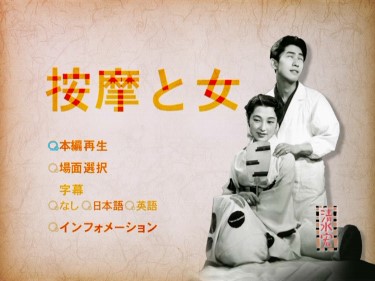 |
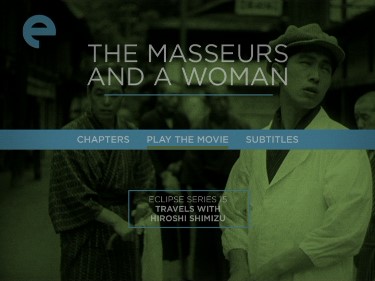 |
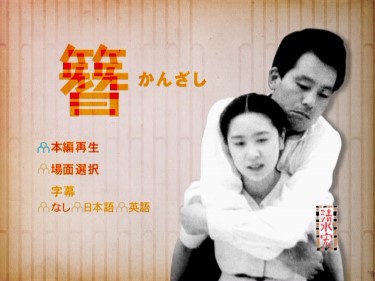 |
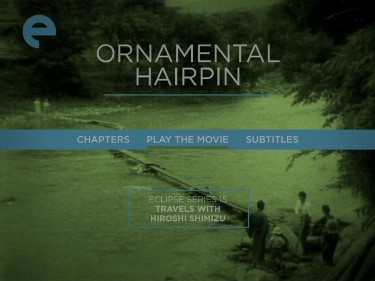 |
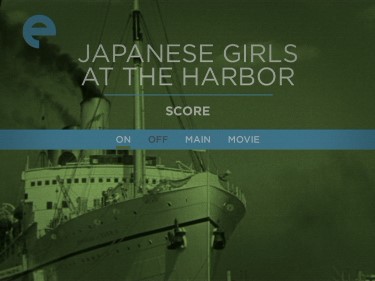 |
Case Covers
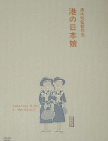 |
|
Screen Captures
In all examples - Shochiku Home Video TOP vs. Criterion BOTTOM
Intertitle sample
|
|
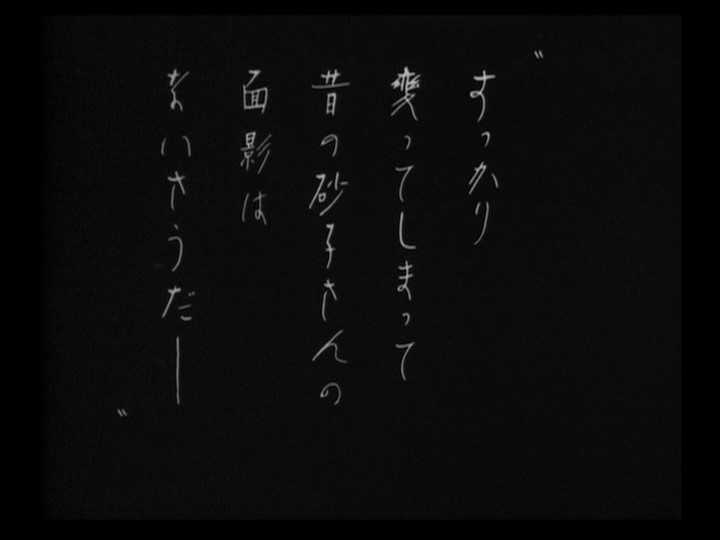 |
|
|
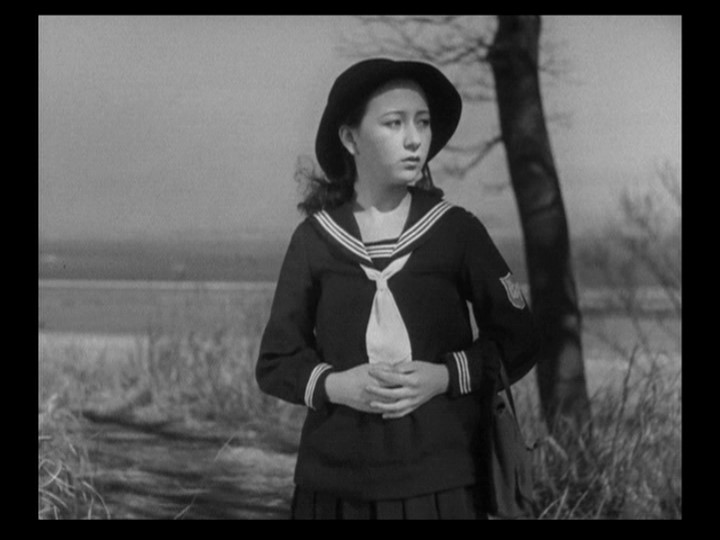 |
|
|
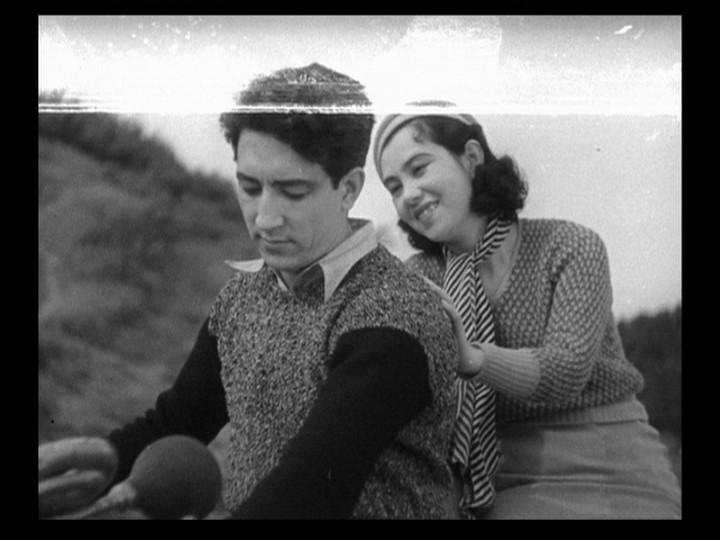 |
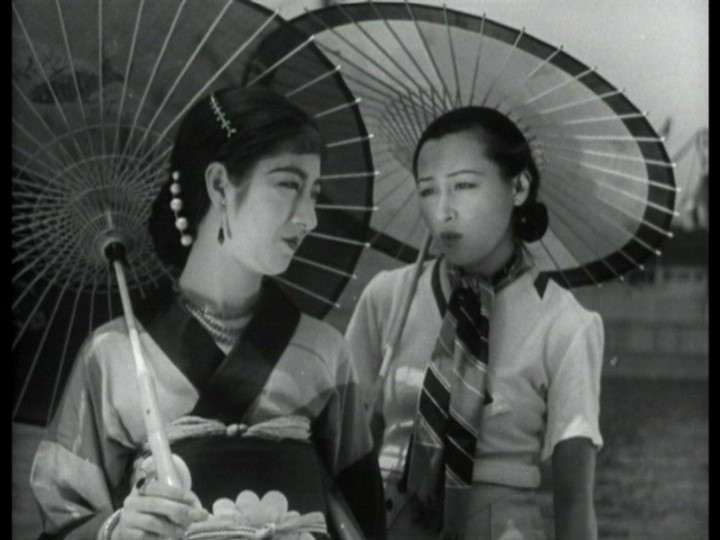 |
|
|
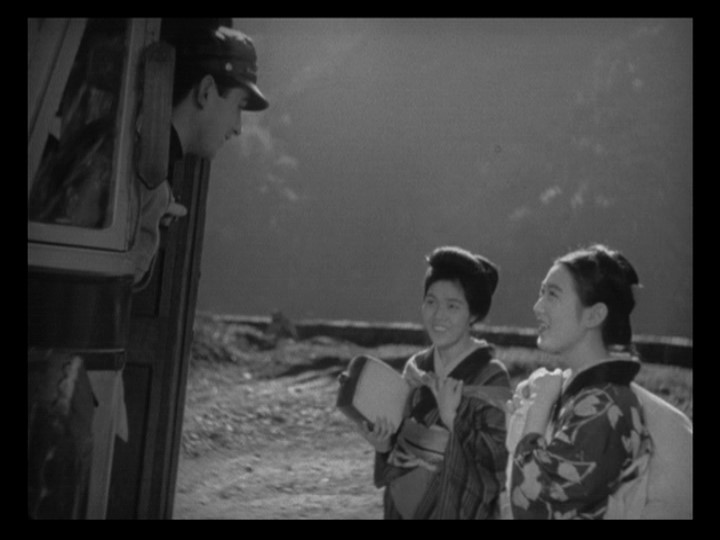 |
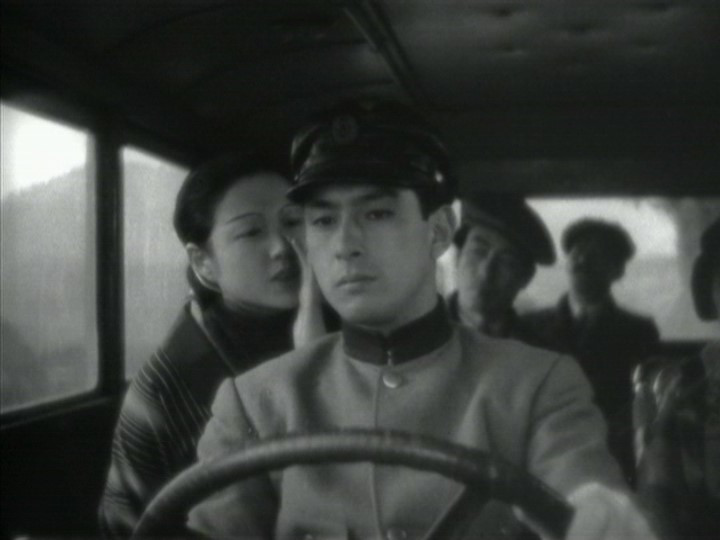 |
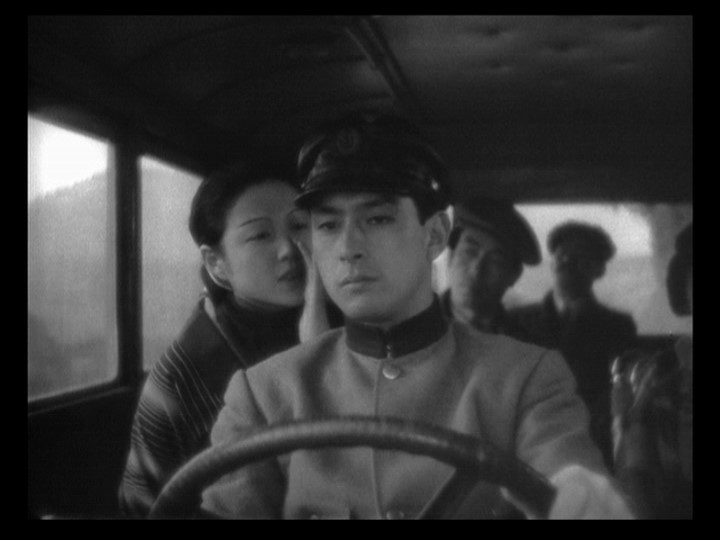 |
|
|
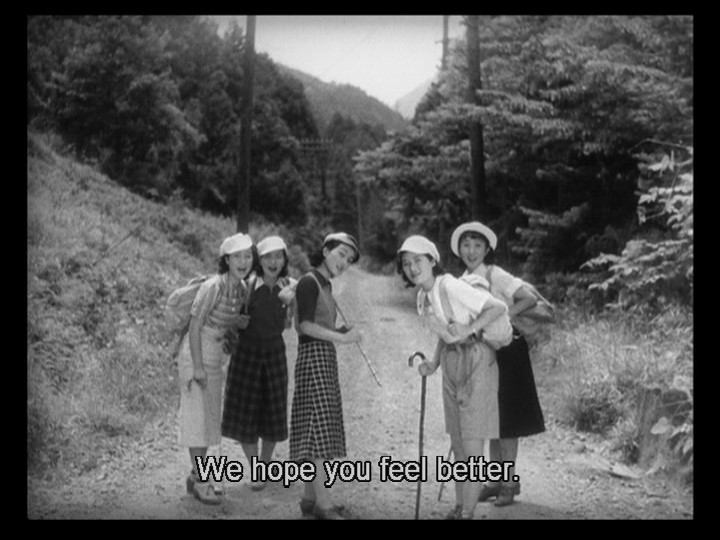 |
|
|
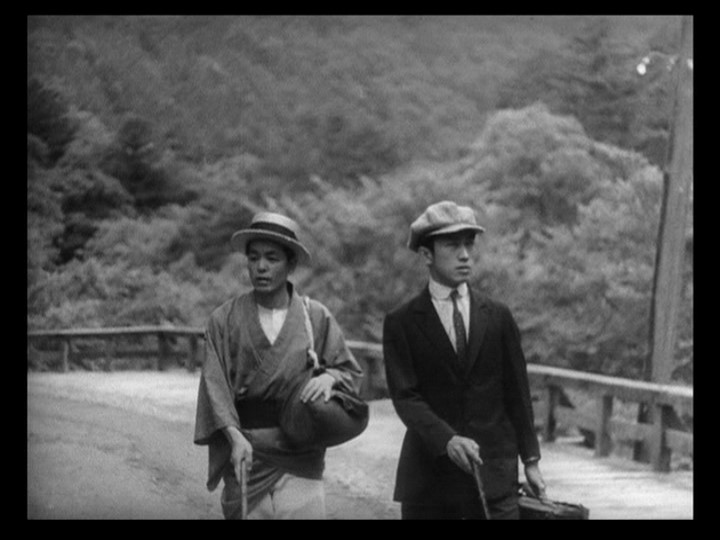 |
|
|
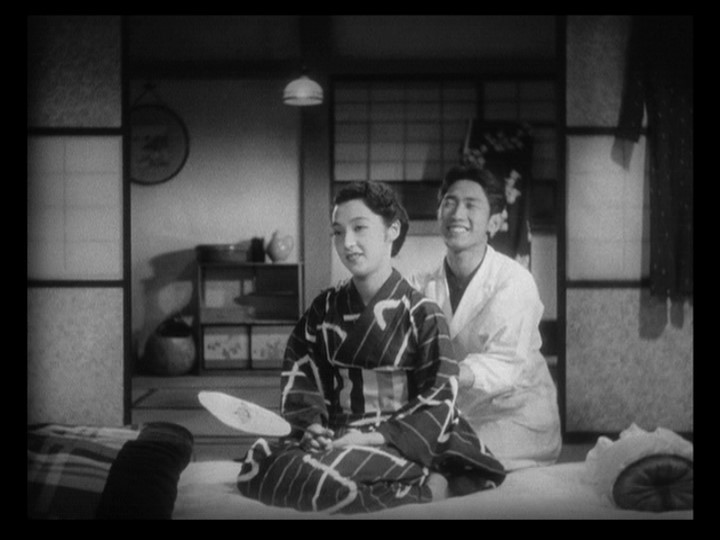 |
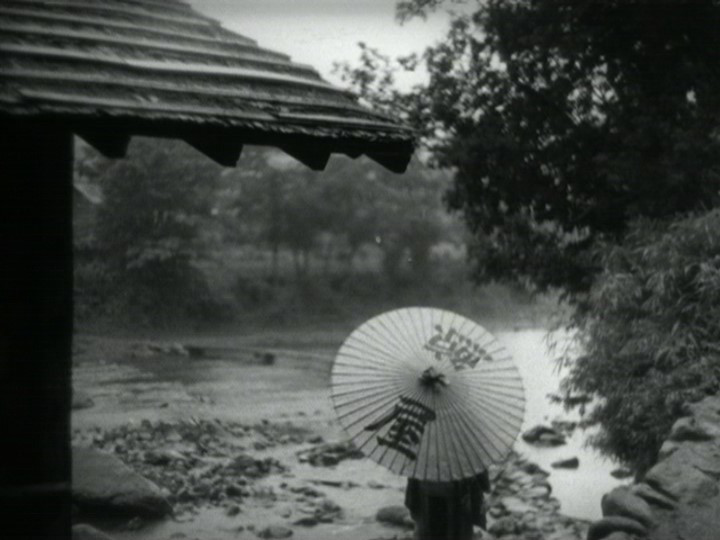 |
|
|
| DVD Box Cover |
|
|
| Distribution | Shochiku Home Video - Region 2 - NTSC | Eclipse Series 15 (Criterion) - Region 1 - NTSC |
![]()
![]()

![]()
![]()

